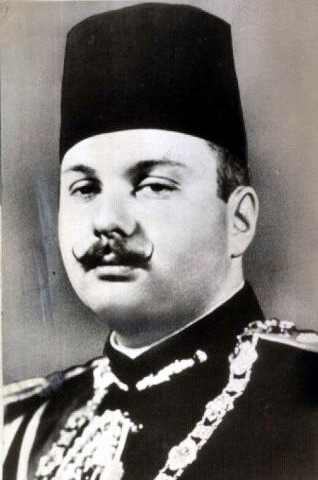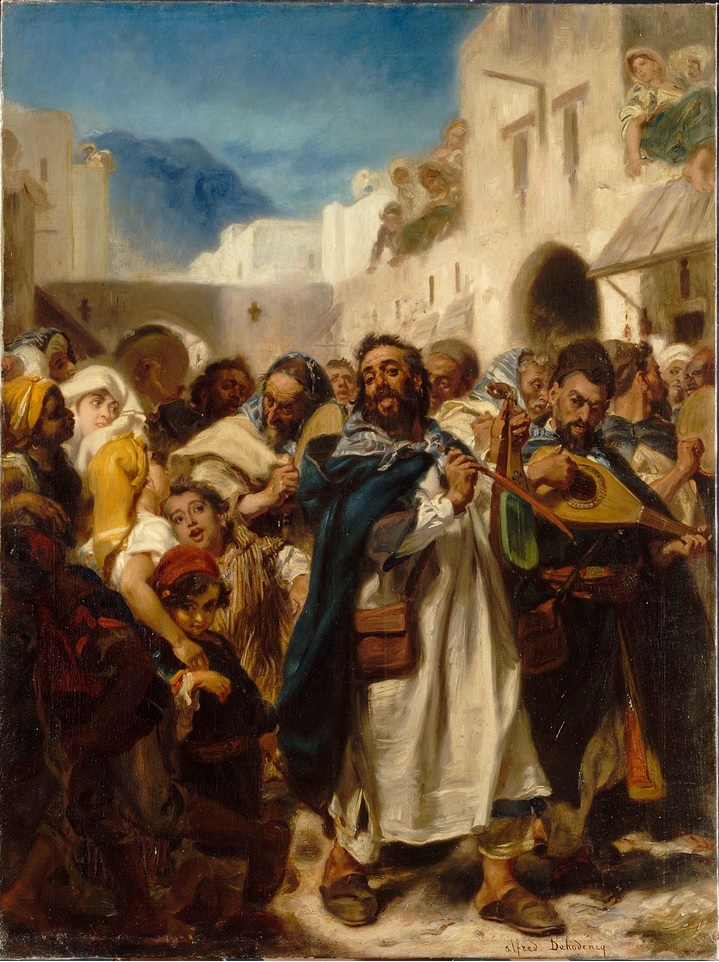|
Adolfo Belimbau
Adolfo Belimbau (1845–1938) was an Italian painter. Biography He was born in a Cairo, Egypt to an Italian Sephardic Jewish family from Tuscany. He lived most of his life in Florence or Livorno. He trained under a painter named Provenzal in Livorno. At the age of 17, he went into commerce, and returned to art only after 11 years. In 1886, he helped organize in the Exhibition of Fine Arts in Livorno, a town which was becoming a summer beach destination. Among his works is the painting ''L'uscita dal lavoro'' (Exit from work), which depicts a long line of women exiting a factory, devolving into animated chatter after a long day of work. At the 1887 Mostra of Venice, he displayed ''Aiselia'' and ''Prima del minuetto''. This latter airy painting was reproduced by ''Illustrazione di Milan'' and later in an illustrated German journal. His later paintings became more rich and depicted leisurely activities. Luigi Chirtani mockingly claimed that the late Belimbau catered to his wealthy ... [...More Info...] [...Related Items...] OR: [Wikipedia] [Google] [Baidu] |
Cairo
Cairo ( ; ar, القاهرة, al-Qāhirah, ) is the capital of Egypt and its largest city, home to 10 million people. It is also part of the largest urban agglomeration in Africa, the Arab world and the Middle East: The Greater Cairo metropolitan area, with a population of 21.9 million, is the 12th-largest in the world by population. Cairo is associated with ancient Egypt, as the Giza pyramid complex and the ancient cities of Memphis and Heliopolis are located in its geographical area. Located near the Nile Delta, the city first developed as Fustat, a settlement founded after the Muslim conquest of Egypt in 640 next to an existing ancient Roman fortress, Babylon. Under the Fatimid dynasty a new city, ''al-Qāhirah'', was founded nearby in 969. It later superseded Fustat as the main urban centre during the Ayyubid and Mamluk periods (12th–16th centuries). Cairo has long been a centre of the region's political and cultural life, and is titled "the city of a thousa ... [...More Info...] [...Related Items...] OR: [Wikipedia] [Google] [Baidu] |
1938 Deaths
Events January * January 1 ** The Constitution of Estonia#Third Constitution (de facto 1938–1940, de jure 1938–1992), new constitution of Estonia enters into force, which many consider to be the ending of the Era of Silence and the authoritarian regime. ** state-owned enterprise, State-owned railway networks are created by merger, in France (SNCF) and the Netherlands (Nederlandse Spoorwegen – NS). * January 20 – King Farouk of Egypt marries Safinaz Zulficar, who becomes Farida of Egypt, Queen Farida, in Cairo. * January 27 – The Honeymoon Bridge (Niagara Falls), Honeymoon Bridge at Niagara Falls, New York, collapses as a result of an ice jam. February * February 4 ** Adolf Hitler abolishes the War Ministry and creates the Oberkommando der Wehrmacht (High Command of the Armed Forces), giving him direct control of the German military. In addition, he dismisses political and military leaders considered unsympathetic to his philosophy or policies. Gene ... [...More Info...] [...Related Items...] OR: [Wikipedia] [Google] [Baidu] |
Painters From Tuscany
Painting is the practice of applying paint, pigment, color or other medium to a solid surface (called the "matrix" or "support"). The medium is commonly applied to the base with a brush, but other implements, such as knives, sponges, and airbrushes, can be used. In art, the term ''painting ''describes both the act and the result of the action (the final work is called "a painting"). The support for paintings includes such surfaces as walls, paper, canvas, wood, glass, lacquer, pottery, leaf, copper and concrete, and the painting may incorporate multiple other materials, including sand, clay, paper, plaster, gold leaf, and even whole objects. Painting is an important form in the visual arts, bringing in elements such as drawing, composition, gesture (as in gestural painting), narration (as in narrative art), and abstraction (as in abstract art). Paintings can be naturalistic and representational (as in still life and landscape painting), photographic, abstract, narrative, sy ... [...More Info...] [...Related Items...] OR: [Wikipedia] [Google] [Baidu] |
Italian Male Painters
Italian(s) may refer to: * Anything of, from, or related to the people of Italy over the centuries ** Italians, an ethnic group or simply a citizen of the Italian Republic or Italian Kingdom ** Italian language, a Romance language *** Regional Italian, regional variants of the Italian language ** Languages of Italy, languages and dialects spoken in Italy ** Italian culture, cultural features of Italy ** Italian cuisine, traditional foods ** Folklore of Italy, the folklore and urban legends of Italy ** Mythology of Italy, traditional religion and beliefs Other uses * Italian dressing, a vinaigrette-type salad dressing or marinade * Italian or Italian-A, alternative names for the Ping-Pong virus, an extinct computer virus See also * * * Italia (other) * Italic (other) * Italo (other) * The Italian (other) The Italian may refer to: * ''The Italian'' (1915 film), a silent film by Reginald Barker * ''The Italian'' (2005 film), a Russian film by A ... [...More Info...] [...Related Items...] OR: [Wikipedia] [Google] [Baidu] |
19th-century Italian Painters
The 19th (nineteenth) century began on 1 January 1801 ( MDCCCI), and ended on 31 December 1900 ( MCM). The 19th century was the ninth century of the 2nd millennium. The 19th century was characterized by vast social upheaval. Slavery was abolished in much of Europe and the Americas. The First Industrial Revolution, though it began in the late 18th century, expanding beyond its British homeland for the first time during this century, particularly remaking the economies and societies of the Low Countries, the Rhineland, Northern Italy, and the Northeastern United States. A few decades later, the Second Industrial Revolution led to ever more massive urbanization and much higher levels of productivity, profit, and prosperity, a pattern that continued into the 20th century. The Islamic gunpowder empires fell into decline and European imperialism brought much of South Asia, Southeast Asia, and almost all of Africa under colonial rule. It was also marked by the collapse of the large ... [...More Info...] [...Related Items...] OR: [Wikipedia] [Google] [Baidu] |
Livornese Jews
The Leghorn (, ; it, Livorno, italic=no or Livornese) is a breed of chicken originating in Tuscany, in central Italy. Birds were first exported to North America in 1828 from the Tuscan port city of Livorno, on the western coast of Italy. They were initially called "Italians", but by 1865 the breed was known as "Leghorn", the traditional anglicisation of "Livorno". The breed was introduced to Britain from the United States in 1870. White Leghorns are commonly used as layer chickens in many countries of the world. Other Leghorn varieties are less common. History The origins of the Leghorn are not clear; it appears to derive from light breeds originating in rural Tuscany. The name comes from Leghorn, the traditional anglicisation of Livorno, the Tuscan port from which the first birds were exported to North America. The date of the first exports is variously reported as 1828, "about 1830" and 1852. They were initially known as "Italians"; they were first referred to as "Legh ... [...More Info...] [...Related Items...] OR: [Wikipedia] [Google] [Baidu] |
1845 Births
Events January–March * January 10 – Elizabeth Barrett receives a love letter from the younger poet Robert Browning; on May 20, they meet for the first time in London. She begins writing her '' Sonnets from the Portuguese''. * January 23 – The United States Congress establishes a uniform date for federal elections, which will henceforth be held on the first Tuesday after the first Monday in November. * January 29 – '' The Raven'' by Edgar Allan Poe is published for the first time, in the ''New York Evening Mirror''. * February 1 – Anson Jones, President of the Republic of Texas, signs the charter officially creating Baylor University (the oldest university in the State of Texas operating under its original name). * February 7 – In the British Museum, a drunken visitor smashes the Portland Vase, which takes months to repair. * February 28 – The United States Congress approves the annexation of Texas. * March 1 – President John Tyler signs a bill ... [...More Info...] [...Related Items...] OR: [Wikipedia] [Google] [Baidu] |
Sephardim
Sephardic (or Sephardi) Jews (, ; lad, Djudíos Sefardíes), also ''Sepharadim'' , Modern Hebrew: ''Sfaradim'', Tiberian Hebrew, Tiberian: Səp̄āraddîm, also , ''Ye'hude Sepharad'', lit. "The Jews of Spain", es, Judíos sefardíes (or ), pt, Judeus sefarditas or Hispanic Jews, are a Jewish diaspora population associated with the Iberian Peninsula. The term, which is derived from the Hebrew ''Sepharad'' (), can also refer to the Mizrahi Jews of Western Asia and North Africa, who were also influenced by Sephardic law and customs. Many Iberian Jewish exiles also later sought refuge in Mizrahi Jewish communities, resulting in integration with those communities. The Jewish communities of the Iberian Peninsula prospered for centuries under the Muslim reign of Al-Andalus following the Umayyad conquest of Hispania, but their fortunes began to decline with the Christians, Christian ''Reconquista'' campaign to retake Spain. In 1492, the Alhambra Decree by the Catholic Monarchs of ... [...More Info...] [...Related Items...] OR: [Wikipedia] [Google] [Baidu] |
Alberto Pisa
Alberto Pisa (March 19, 1864 – 1936) was an Italian painter, often painting ruins, landscapes, and garden views in bright watercolor. Early life and education He was born in Ferrara and initially studied there with Gaetano Domenichini. He later studied at the Academy of Fine Arts of Florence. Career His first work was a ''Church Interior'', displayed at the Promotrice. In 1887, he sent to the Exposition of Venice, the canvases depicting the ''Church of Santa Maria Novella'', and the genre painting Genre painting (or petit genre), a form of genre art, depicts aspects of everyday life by portraying ordinary people engaged in common activities. One common definition of a genre scene is that it shows figures to whom no identity can be attache ... ''Donne e Madonne''. In 1888 at Bologna, he exhibited: ''Tempo ladro'' and ''Fra i polli''. In 1889 at the Florence Promotrice, he displayed the oil canvas, ''Le lavandaie'' and a pastel, ''Il fiammiferaio''. At the Pisani Gallery of ... [...More Info...] [...Related Items...] OR: [Wikipedia] [Google] [Baidu] |
Ulvi Liegi
Ulvi Liegi (born Luigi Mosè Levi; 1858–1939) was an Italian painter and printmaker. Part of the Post-macchiaioli movement, he painted various cityscapes of Livorno and depictions of Livornese daily life. Biography Luigi Levi, who signed his paintings as Ulvi Liegi (an anagram of his real name), was born in Livorno in a wealthy Jewish family. He got initial art education in Livorno, and then he moved to Florence, where he studied in the Academy of Arts under Adolfo Tommasi, Carlo Markò the Younger, and Giuseppe Ciaranfi. While in Florence, he became friends with many artists from the Macchiaioli group, first Telemaco Signorini, and later one of the leaders of the group, Giovanni Fattori. Liegi first exhibited his paintings in 1882, and got positive responses. In the 1880s, he painted in the style close to the Macchiaioli, but later started to paint in a style close to impressionism. In 1886–1888 Liegi visited Paris, where he studied works of impressionists, and London; i ... [...More Info...] [...Related Items...] OR: [Wikipedia] [Google] [Baidu] |







